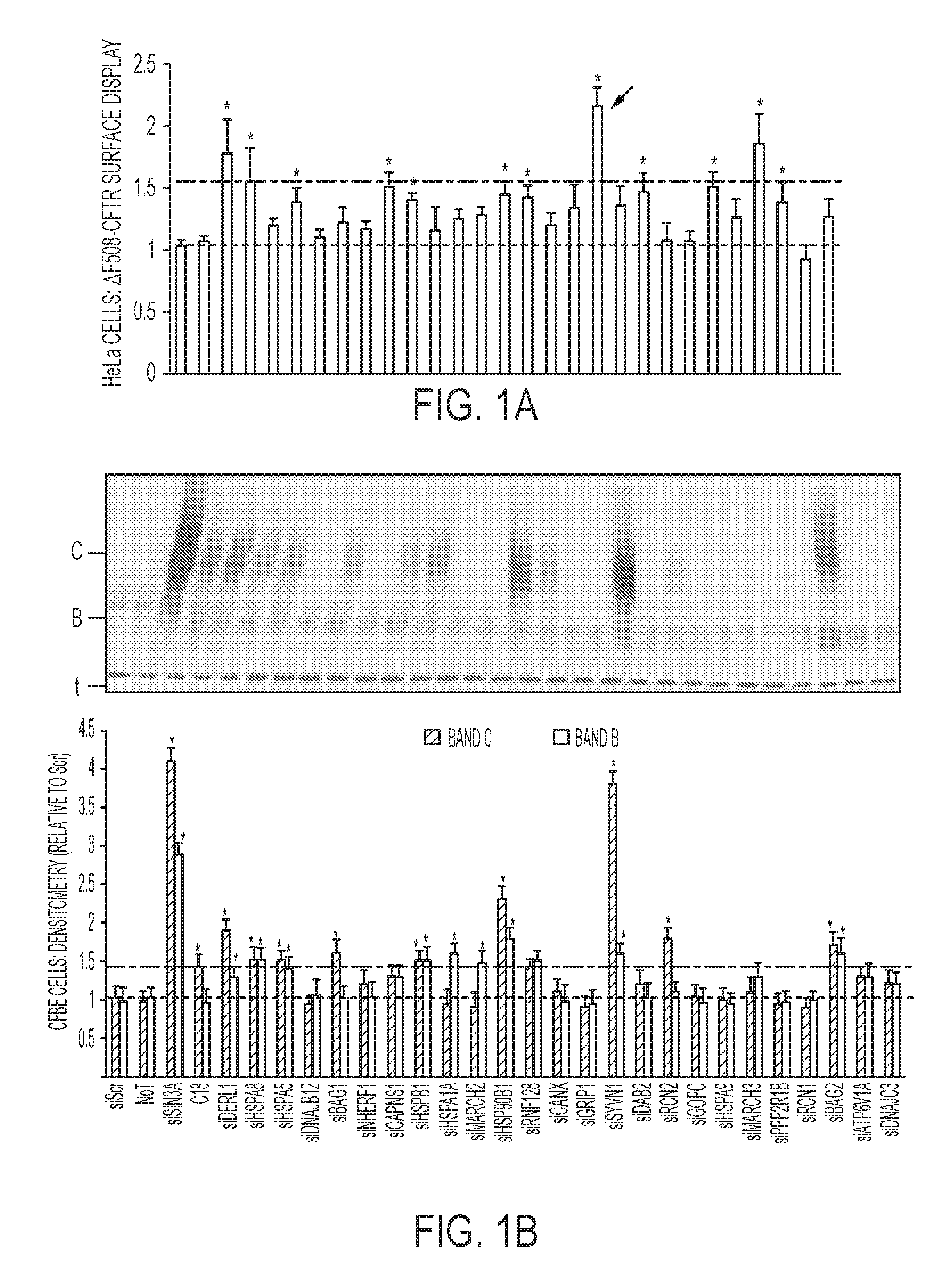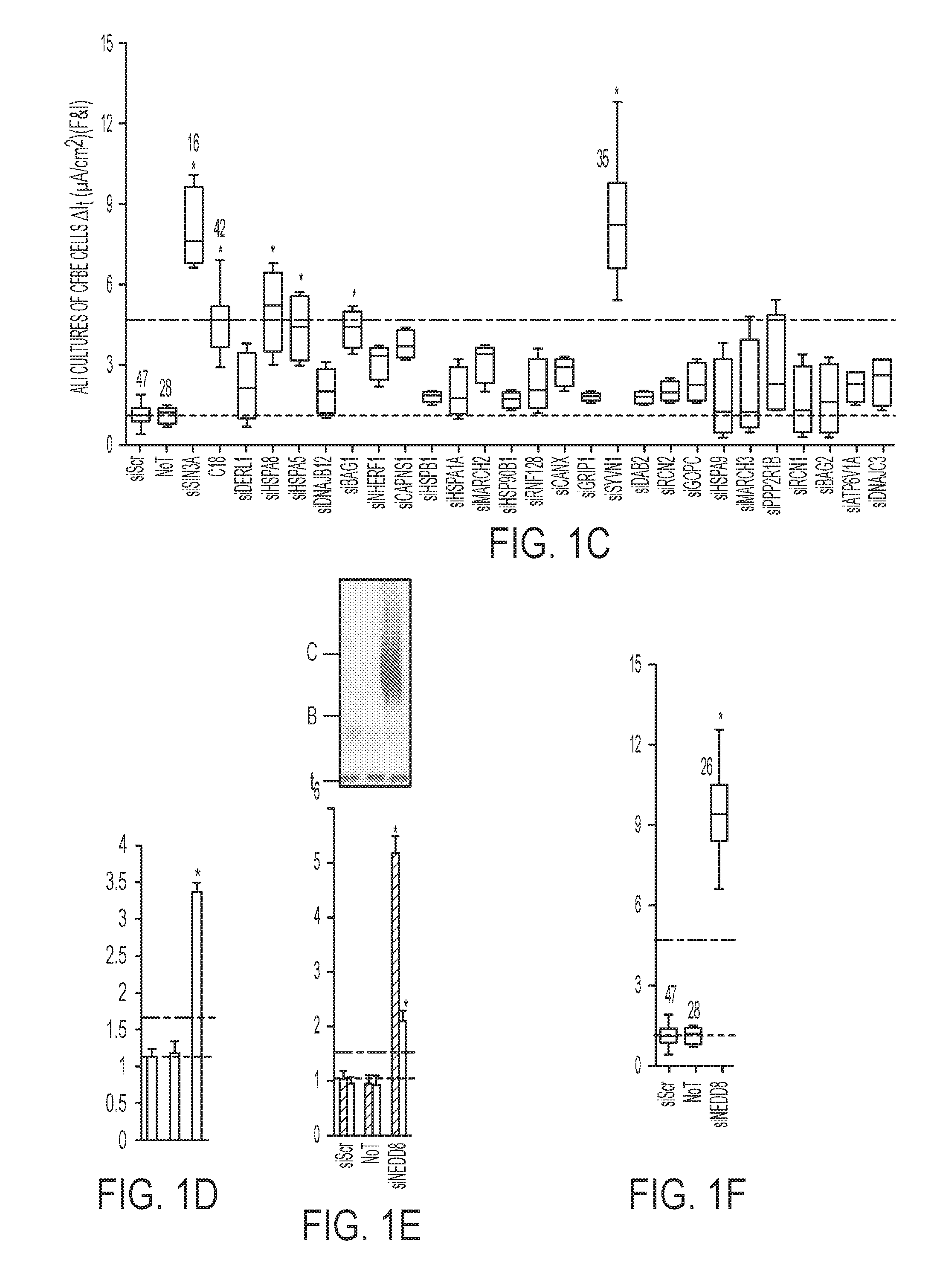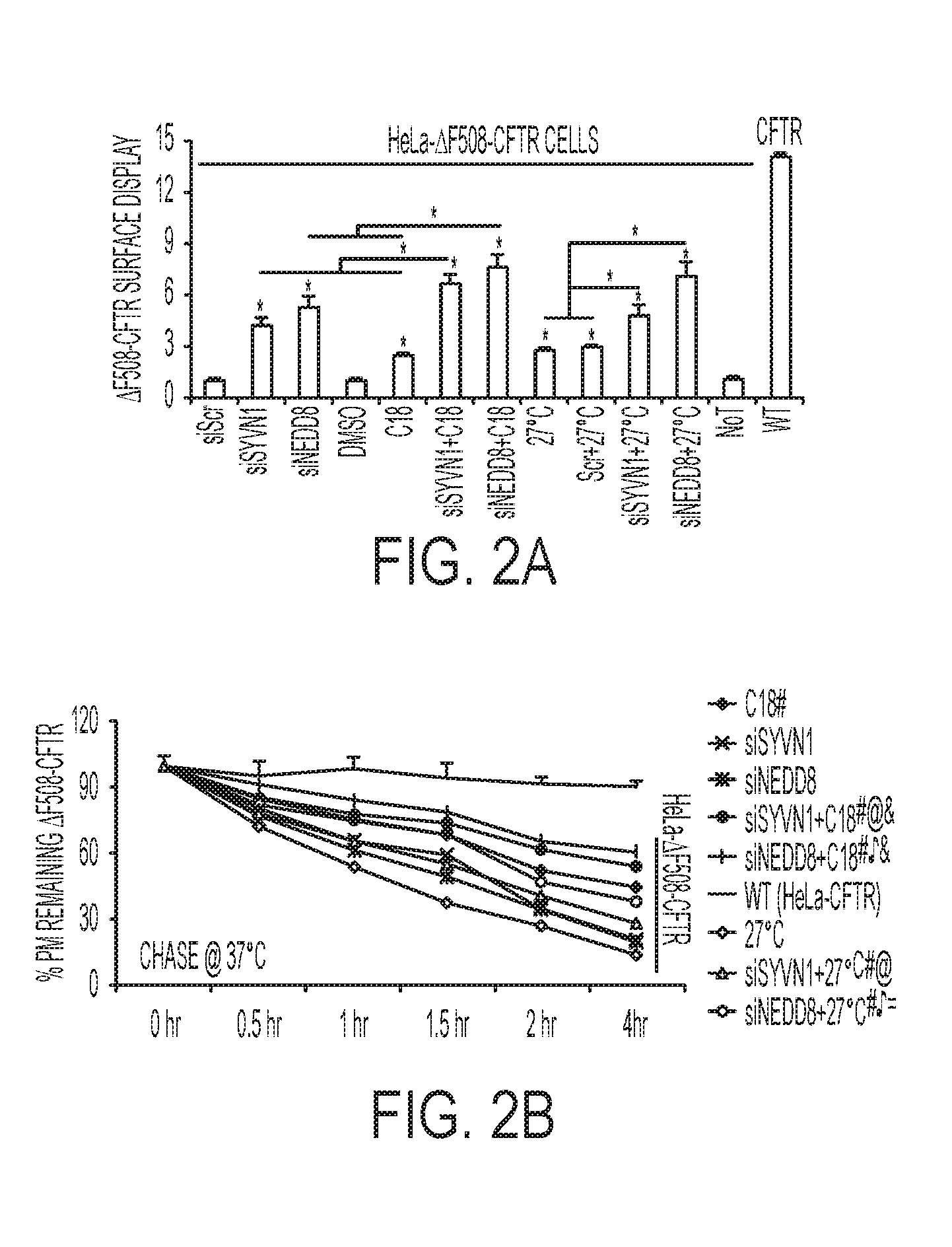Method of regulating cftr expression and processing
a technology of cftr and expression, applied in the field of regulating cftr expression and processing, can solve the problems of abnormal biogenesis, difficulty breathing, and often early death of progressive disability, and achieve the effects of restoring the function of the cftr anion channel, increasing the expression of the target gene, and increasing expression
- Summary
- Abstract
- Description
- Claims
- Application Information
AI Technical Summary
Benefits of technology
Problems solved by technology
Method used
Image
Examples
example 1
REFERENCES FOR EXAMPLE 1
[0230]1. Rowe, S. M., Miller, S. & Sorscher, E. J. Cystic fibrosis. N Engl J Med 352, 1992-2001 (2005).[0231]2. Anderson, M. P. et al. Demonstration that CFTR is a chloride channel by alteration of its anion selectivity. Science 253, 202-205 (1991).[0232]3. Anderson, M. P., Rich, D. P., Gregory, R. J., Smith, A. E. & Welsh, M. J. Generation of cAMP-activated chloride currents by expression of CFTR. Science 251, 679-682 (1991).[0233]4. Kerem, B. et al. Identification of the cystic fibrosis gene: genetic analysis. Science 245, 1073-1080 (1989).[0234]5. Tsui, L. C. Mutations and sequence variations detected in the cystic fibrosis transmembrane conductance regulator (CFTR) gene: a report from the Cystic Fibrosis Genetic Analysis Consortium. Hum Mutat 1, 197-203 (1992).[0235]6. Cheng, S. H. et al. Defective intracellular transport and processing of CFTR is the molecular basis of most cystic fibrosis. Cell 63, 827-834 (1990).[0236]7. Ward, C. L., Omura, S. & Kopito...
PUM
| Property | Measurement | Unit |
|---|---|---|
| pH | aaaaa | aaaaa |
| pH | aaaaa | aaaaa |
| Tm | aaaaa | aaaaa |
Abstract
Description
Claims
Application Information
 Login to View More
Login to View More - R&D
- Intellectual Property
- Life Sciences
- Materials
- Tech Scout
- Unparalleled Data Quality
- Higher Quality Content
- 60% Fewer Hallucinations
Browse by: Latest US Patents, China's latest patents, Technical Efficacy Thesaurus, Application Domain, Technology Topic, Popular Technical Reports.
© 2025 PatSnap. All rights reserved.Legal|Privacy policy|Modern Slavery Act Transparency Statement|Sitemap|About US| Contact US: help@patsnap.com



